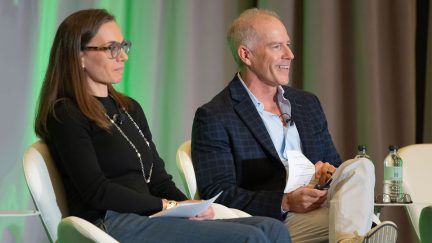Never miss a story — sign up for PLANADVISER newsletters to keep up on the latest retirement plan adviser news.
BlackRock to Acquire FutureAdvisor
BlackRock Inc. has entered into a definitive agreement to acquire FutureAdvisor, a provider of digital wealth management. FutureAdvisor will operate as a business within BlackRock Solutions (BRS), the firm’s investment and risk management platform. The unit will provide financial institutions with technology-enabled advice capabilities to improve their clients’ investment experience.
The combined offering will enable financial institutions to grow their advisory businesses by leveraging technology to meet a growing consumer trend of engaging with technology to gain insights on their investment portfolios, including when making critical decisions about retirement. This need is particularly acute among the mass affluent, a large segment accounting for 30% of total U.S. investable assets.
The acquisition of FutureAdvisor helps meet the needs of a range of financial institutions including banks, insurers, large and small broker/dealers, 401(k) platforms, and other advisory firms looking for a digital-advice platform to increase customer loyalty and grow advisory assets, BlackRock says.
“As demand for digital wealth management grows, we believe that our combined offering will accelerate our partner firms’ abilities to serve the mass affluent in a convenient, scalable way,” saysTom Fortin, head of retail technology for BlackRock.
“BlackRock Solutions has a history of offering technology and advisory services to a broad range of institutions,” adds Robert Goldstein, chief operating officer and global head of BlackRock Solutions. “The acquisition of FutureAdvisor is an extension of BRS’ mission to help clients solve their most complex investment challenges through technology.”
FutureAdvisor, a provider of digital wealth management services, has technology-enabled advice capabilities that include: personalized advice that can look holistically across clients’ brokerage, individual retirement account (IRA) and 401(k) accounts; tax-efficient portfolio management; mobile and web applications; online account enrollment; and multi-custodian support. BlackRock will complement these capabilities with multi-asset class model portfolios, investment products and BlackRock Solutions’ enterprise technology and risk analytics from Aladdin to partner firms.
“BlackRock has dedicated enormous effort over the years to improving financial outcomes through its leading active and passive investment offerings as well as innovative retirement planning tools including its CoRI Retirement Indexes. We look forward to integrating and delivering this expertise to investors in partnership with financial institutions in the months to come,” says Bo Lu, chief executive officer and co-founder of FutureAdvisor.
The transaction is expected to close in the fourth quarter of 2015. The financial impact of the transaction is not material to BlackRock earnings per share. Terms of the deal were not disclosed.
You Might Also Like:

Rethinking Opportunities for RIA Growth

Advisers Step Up as Clients Face Market Uncertainty
